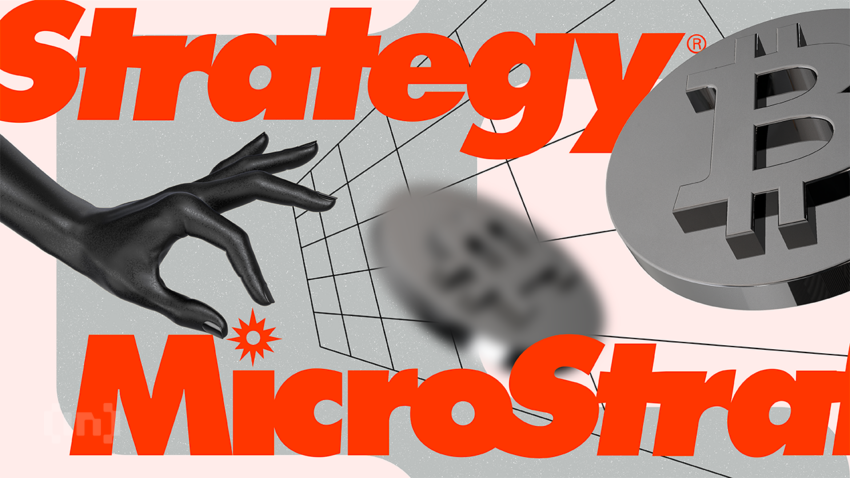MicroStrategy, a US-based business intelligence and software company, has introduced a new decentralized identification protocol named Orange. This innovative protocol was unveiled at the annual MicroStrategy World event in Las Vegas on May 1.
Orange stands out by employing a novel method of using inscriptions as Ordinals on the Bitcoin (BTC) blockchain to store data related to decentralized identities (DID). The protocol utilizes the Segregated Witness (SegWit) feature of Bitcoin. It also enables documents to be created and updated with minimal restrictions on size and content.
Why is MicroStrategy’s Orange Different from Other DID Solutions?
During a segment called “Bitcoin Security,” Michael Saylor, co-founder and Executive Chairman of MicroStrategy, explained the idea behind Orange protocol.
“Our vision is to provide an internet native decentralized digital identity backed by Bitcoin. So, we want to use the open standard of DID, and we want to use the open standard of Bitcoin and put the two together … Why would we use Bitcoin? Well, it is fault tolerance, it is censorship resistance, it does use the most advanced cryptography, it’s a lot better than most people’s taskwork managers and this federated system. It is distributed … It’s open, permisionless, egalitarian, ” Saylor said.
Read more: Decentralized Identity and the Future of Web3: What To Know
Furthermore, Saylor highlighted that the protocol ensures that the decentralized identities are managed efficiently, reducing transaction fees and block space utilization—which are common concerns in blockchain operations. Yet, it is still unclear when MicroStrategy will officially launch the Orange protocol.
Based on the information on their “unofficial draft” on Github, the technological foundation of Orange is based on Bitcoin’s inscription. Orange embeds DID information directly on the blockchain, unlike other DID methods that rely on external data sources or additional dependencies. This method secures data permanence and integrity while enhancing the digital identities’ overall functionality and forward compatibility.
For instance, the Bitcoin Reference DID method (did:btcr) relies on referencing a URL to fetch DID document data. Such reliance can compromise the blockchain’s immutable nature if the URL content changes. In contrast, Orange stores additional data for the DID document directly on-chain.
Additionally, ION (did:ion) requires indexing all the IPFS data pointed to by Bitcoin transactions, which introduces more external dependencies. Orange’s use of taproot script path reveal transactions allows for storing arbitrary amounts of data in the witness of Bitcoin transactions through inscriptions. Therefore, Orange can avoid these dependencies.
Moreover, Orange enhances the security measures by distinguishing between the “wallet keys” used to sign Bitcoin transactions on-chain and the “subject keys” that authenticate the DID subject. This separation allows a third party to manage a DID on behalf of its subject or require multiple signatures. Hence, it offers an extra layer of security and control.
Indeed, while blockchain-based digital identities offer the potential for enhanced verification, privacy concerns remain paramount. Therefore, to gain deeper insights, we consulted Wendy Lopez, Latam Growth Manager at the Bitcoin wallet app – Xvers.
Lopez suggests that recursion or on-chain encryption could play a pivotal role in the development of the Orange protocol. She highlights the unique aspect of Bitcoin—where transparency exists alongside the potential to encrypt sensitive data for privacy protection.
MicroStrategy’s vision of integrating the Orange protocol with social networks and other digital platforms faces potential technical hurdles and user adoption challenges. Lopez points out that fluctuating fees could create a barrier, comparable to the cost of using the platforms themselves. However, she believes that utilizing UTXO and Layer 2 development on Bitcoin (similar to the Runes protocol) could mitigate costs and increase speed.
“For the average user, one day they won’t know they are being verified via blockchain. One day, blockchain will simply be the underlying technology and solve some problems, like verifying a human against AI,” Lopez told BeInCrypto.
Although the promise of a truly decentralized identity is clear, Lopez notes the intrigue surrounding how MicroStrategy will manage large-scale execution. This is given the inherent limitations and costs of on-chain storage in Bitcoin.
Nonetheless, the Orange protocol initiative also demonstrated MicroStrategy’s continuous support and involvement in the Bitcoin ecosystem. Earlier in February, Saylor said the firm was pivoting to a Bitcoin development strategy.
“We view ourselves as a Bitcoin development company. That means we’re going to do everything we can to grow the Bitcoin network,” he said during the company’s fourth-quarter earnings webinar on February 6.
MicroStrategy’s latest Bitcoin acquisition further solidified its long-term vision towards Bitcoin. BeInCrypto reported that MicroStrategy purchased an additional 122 BTC this April, totaling $7.8 million.
The transaction increases MicroStrategy’s holdings to 214,400 BTC, now valued at over $12.35 billion. With its holdings amount, MicroStrategy positions itself as a major player with over 1% of the finite 21 million Bitcoin supply.
Read more: What Is Digital Identity?

However, these positive developments have not yet immediately impacted MicroStrategy’s stock price (MSTR). As of May 1, the closing price of MSTR was $1,065.03. Nevertheless, over a longer time frame, MSTR has been up about 180% this year, rising from $685.15 on January 2 to reaching its peak of $1,919.16 on March 27.
Disclaimer
In adherence to the Trust Project guidelines, BeInCrypto is committed to unbiased, transparent reporting. This news article aims to provide accurate, timely information. However, readers are advised to verify facts independently and consult with a professional before making any decisions based on this content. Please note that our Terms and Conditions, Privacy Policy, and Disclaimers have been updated.


